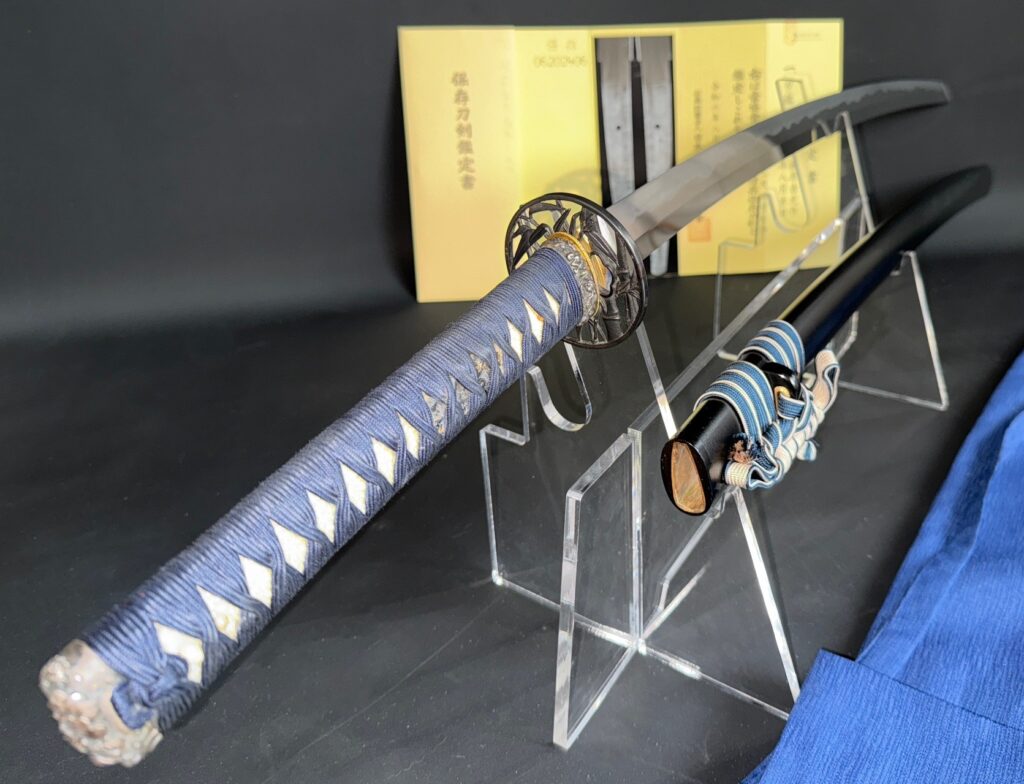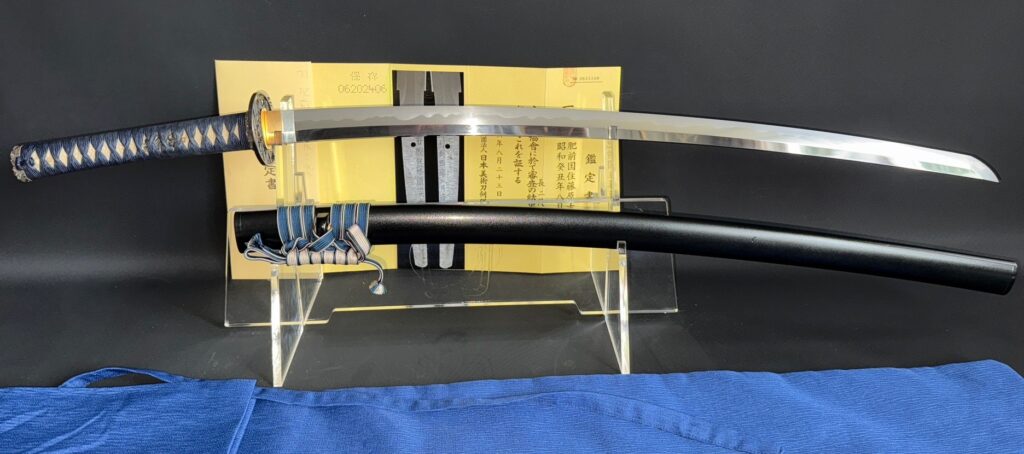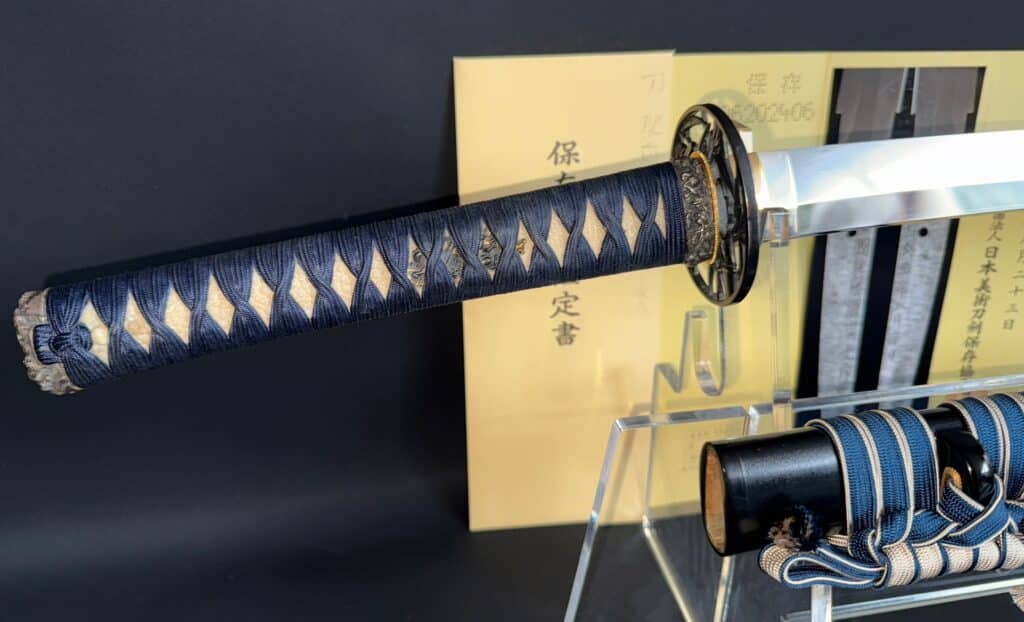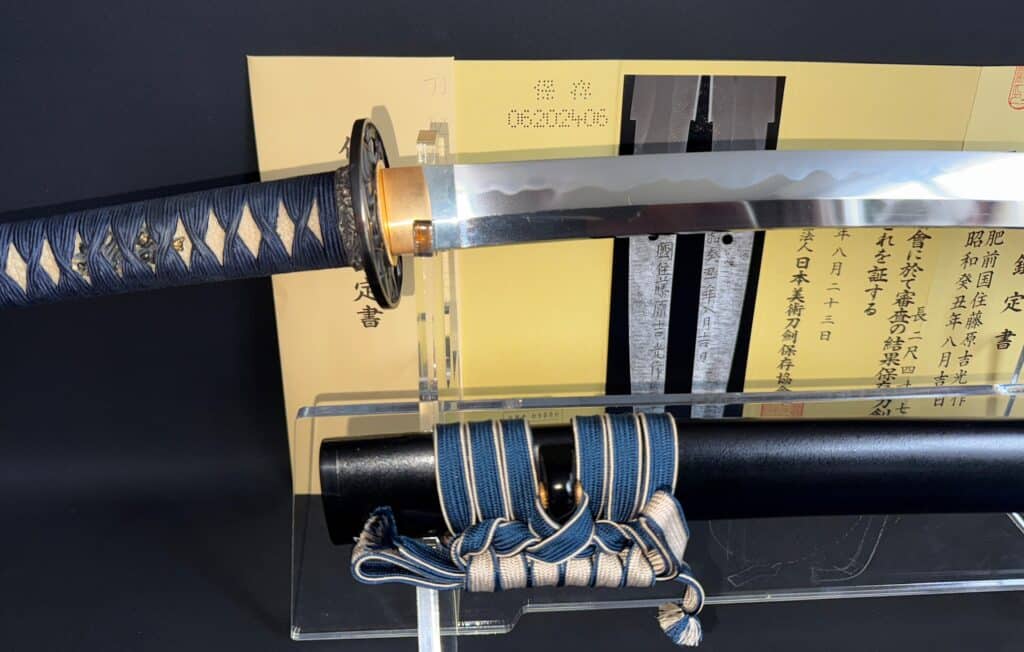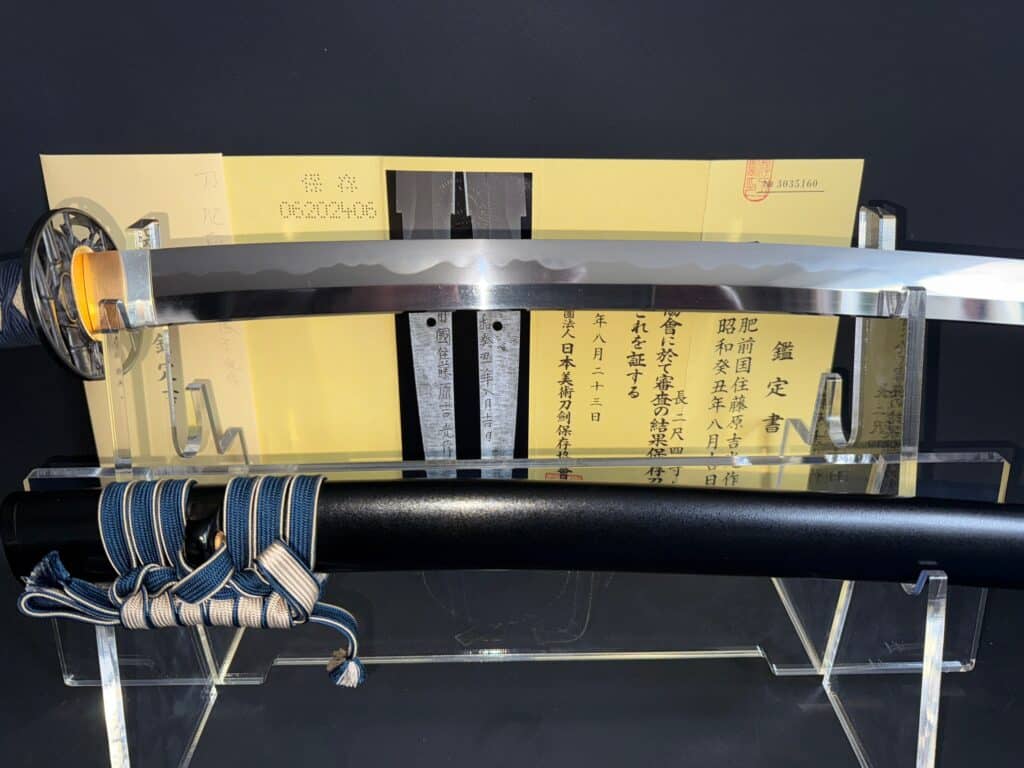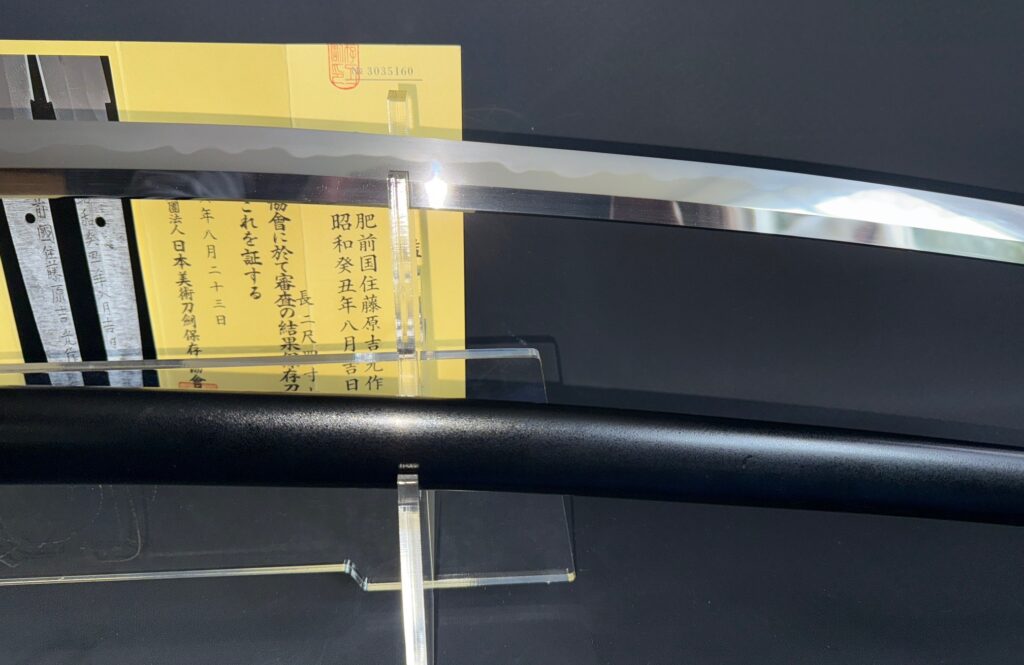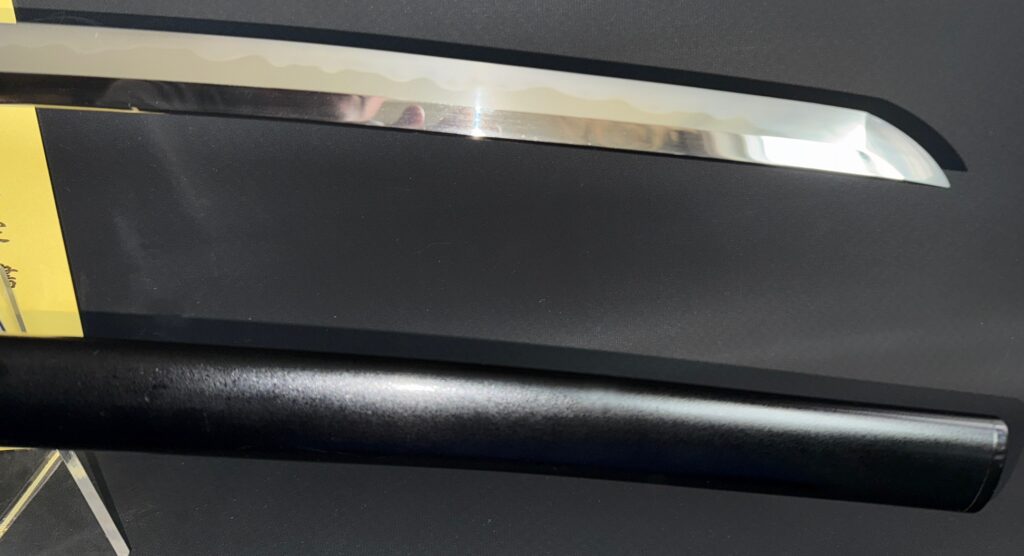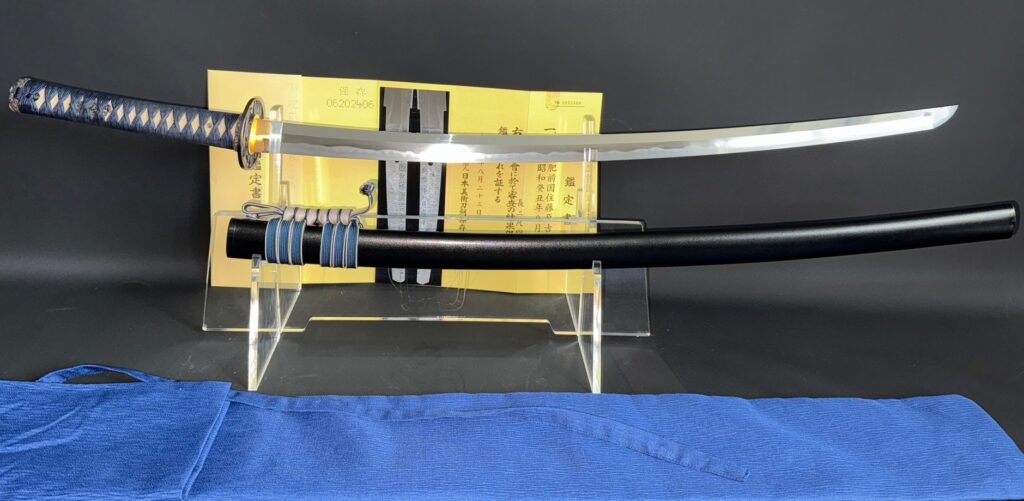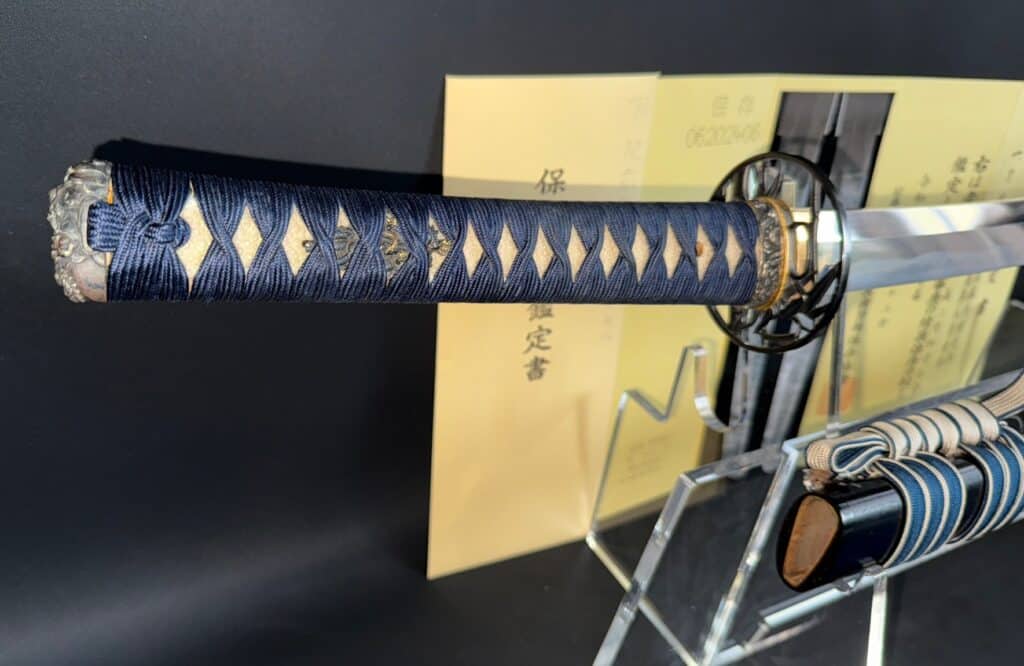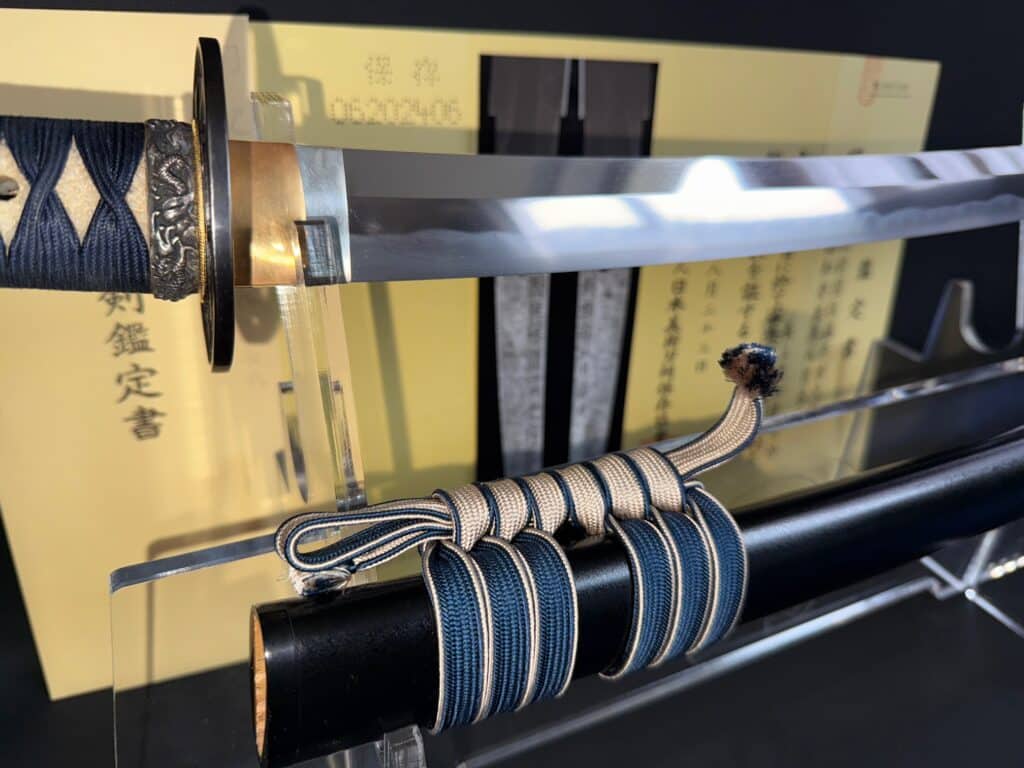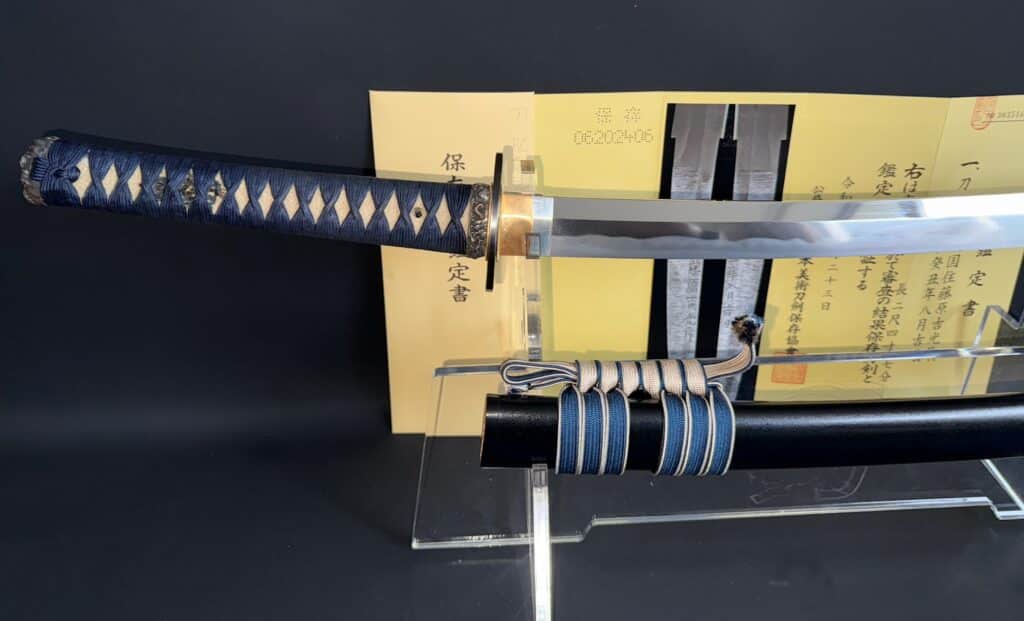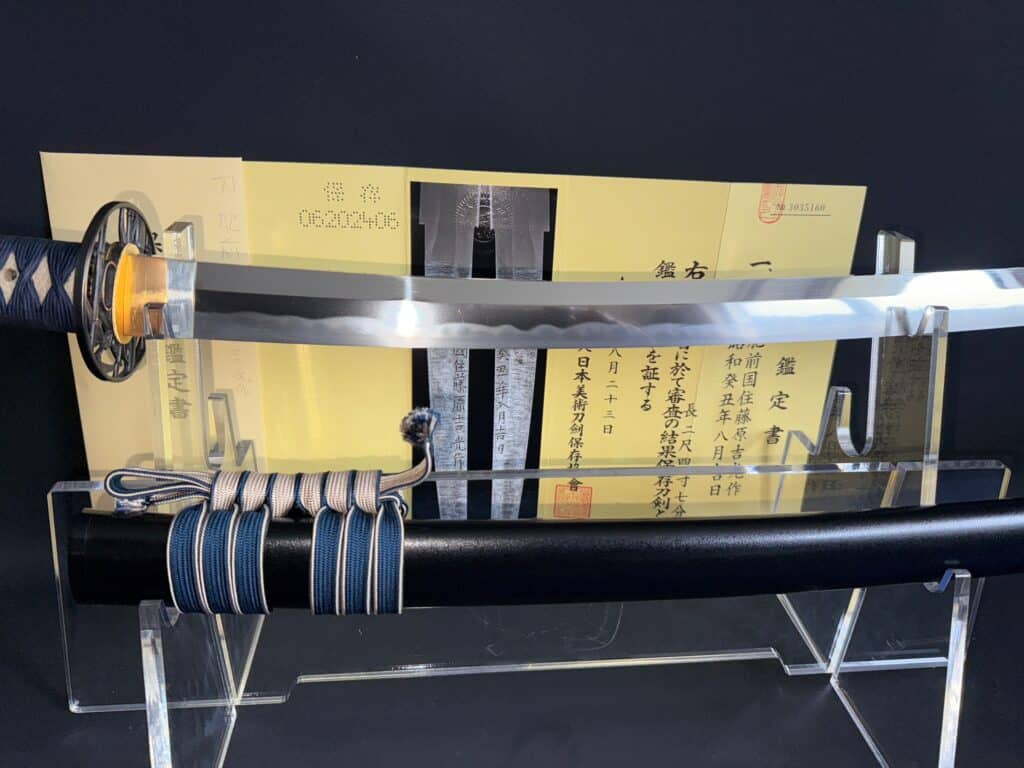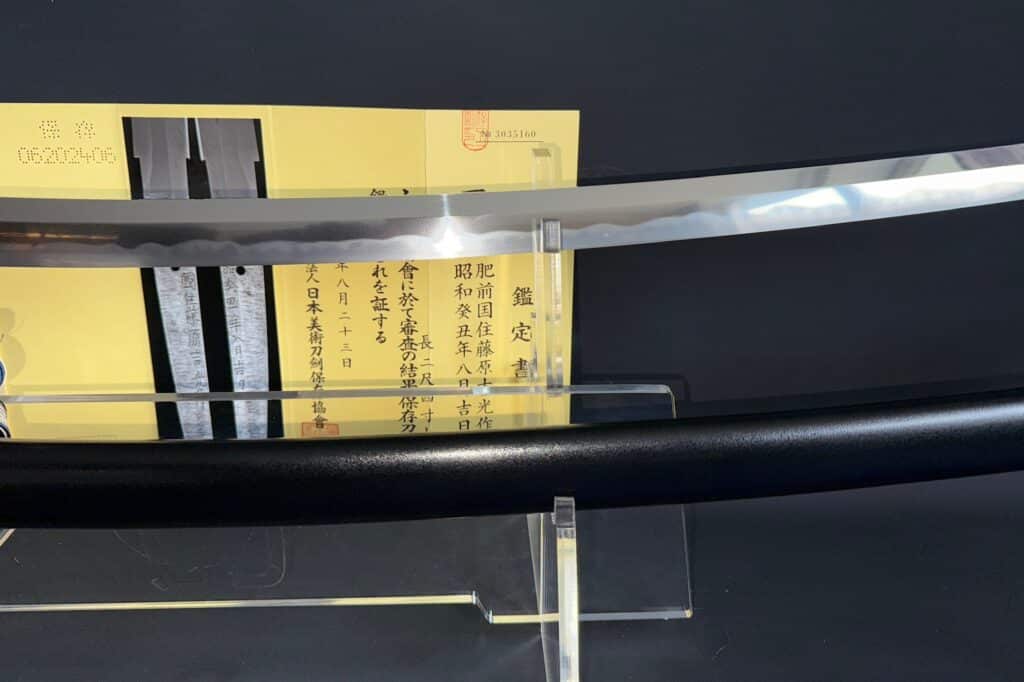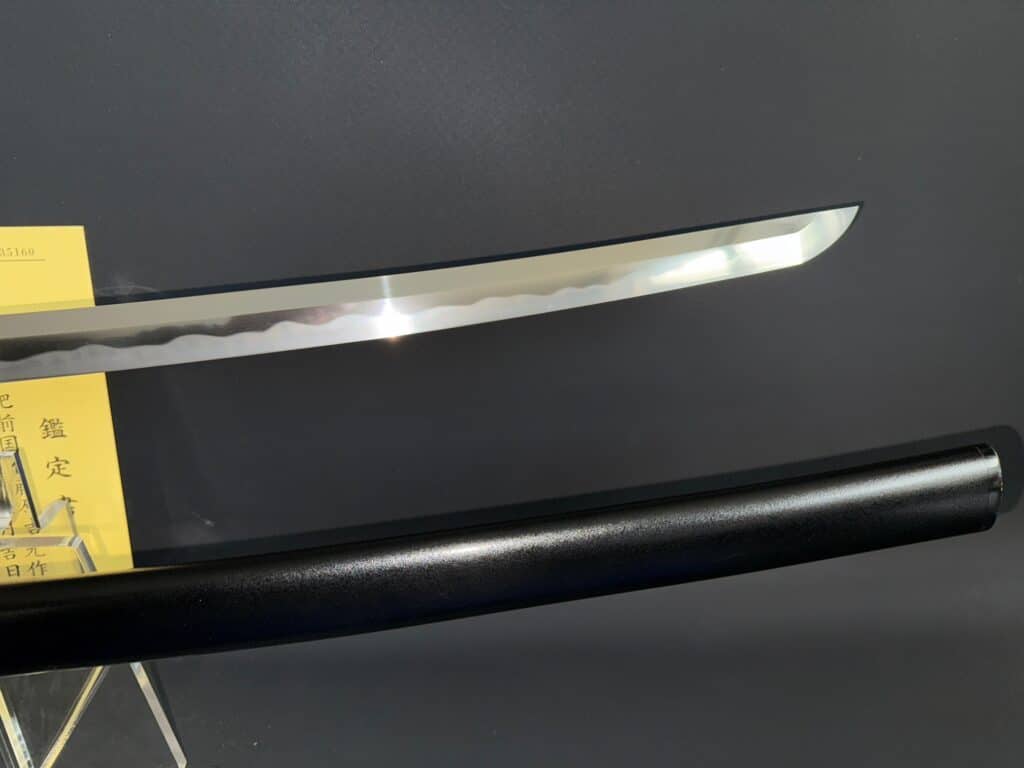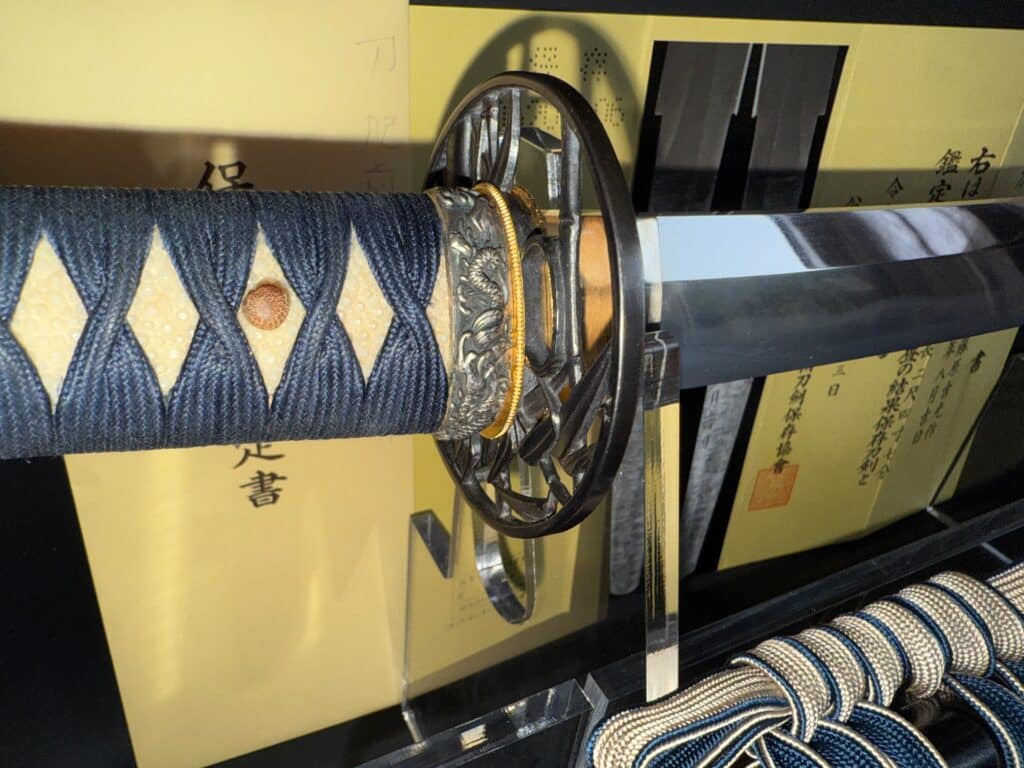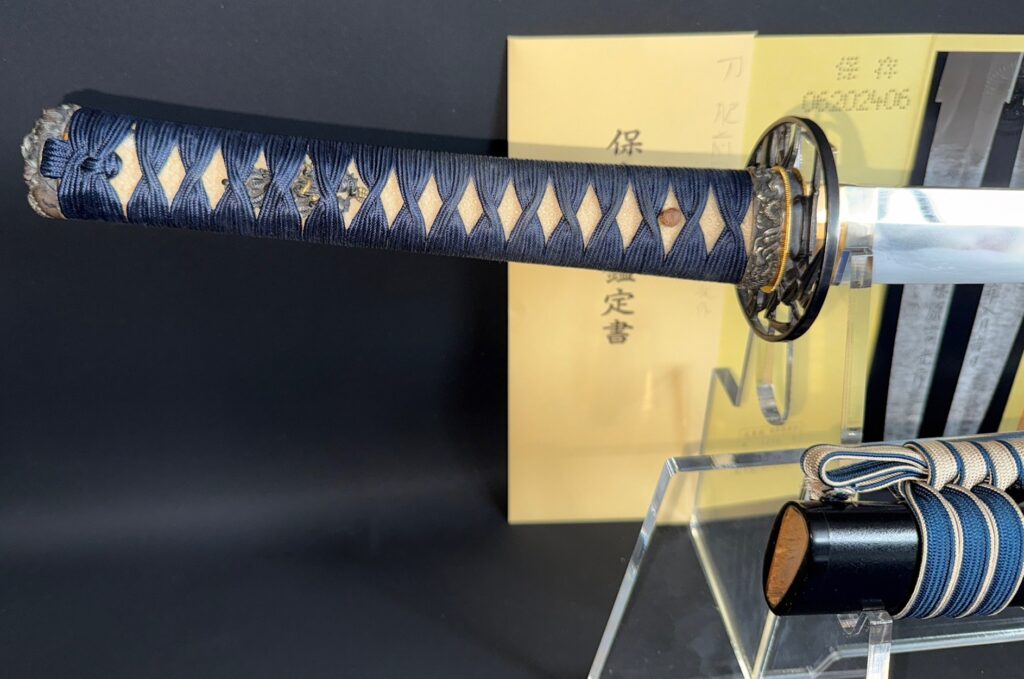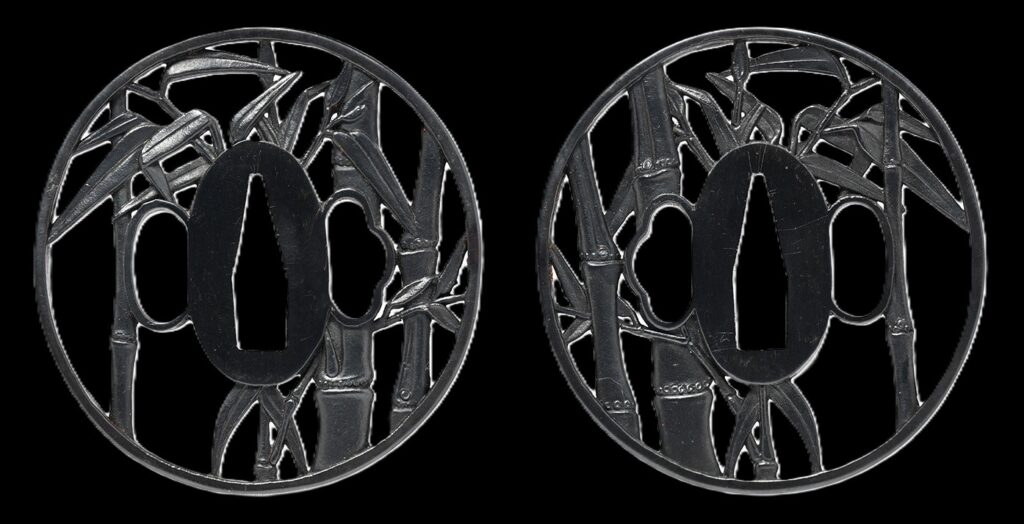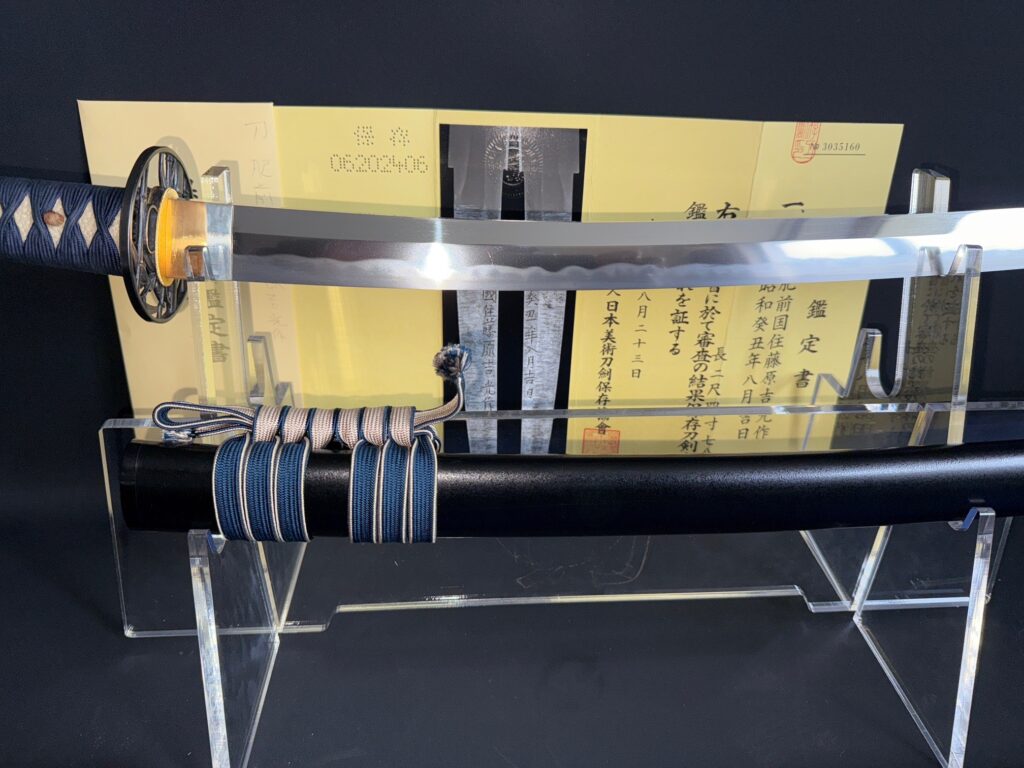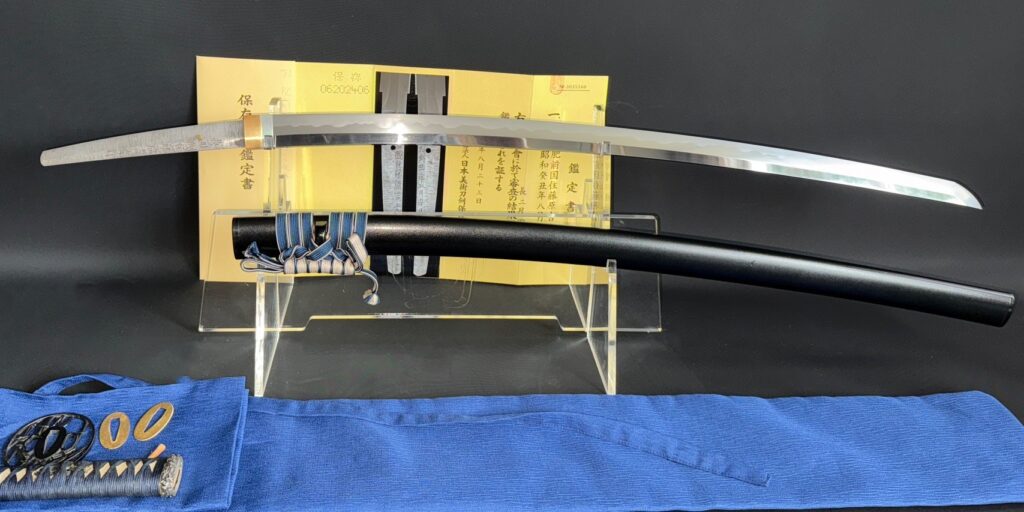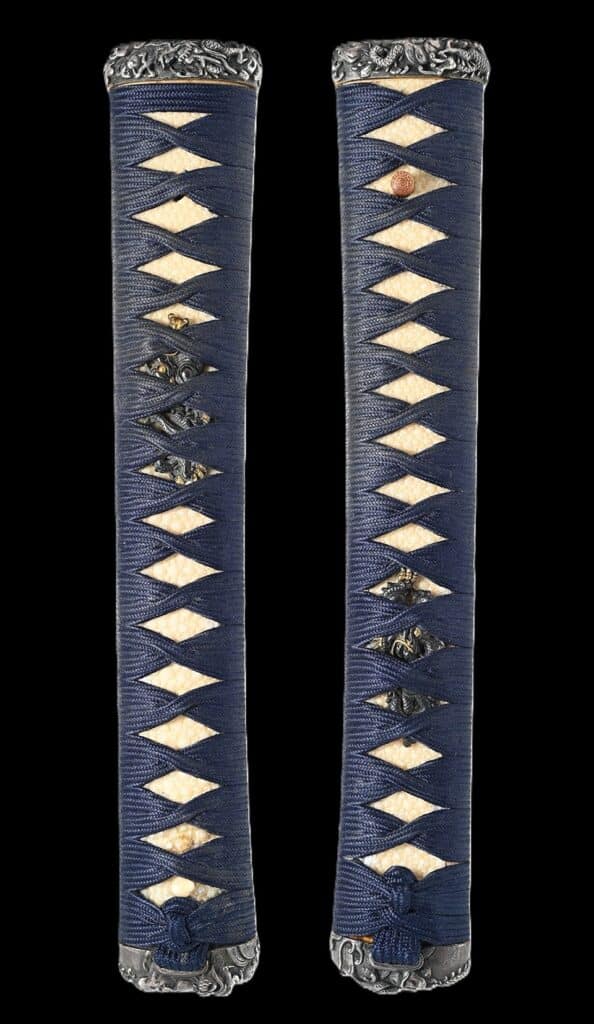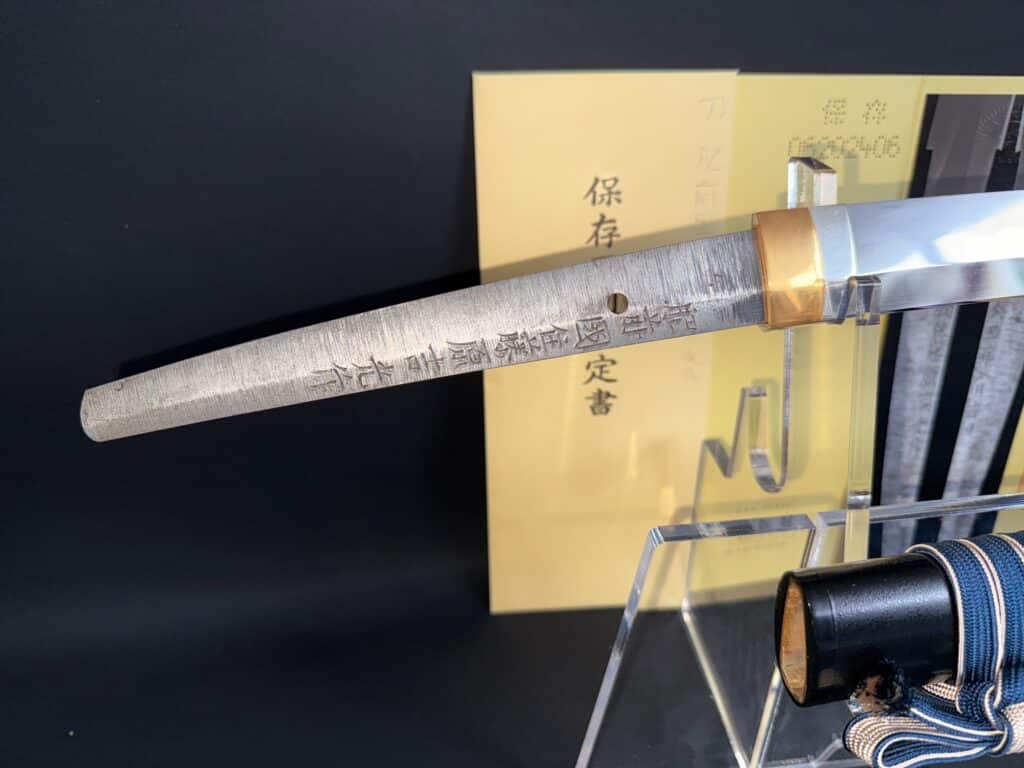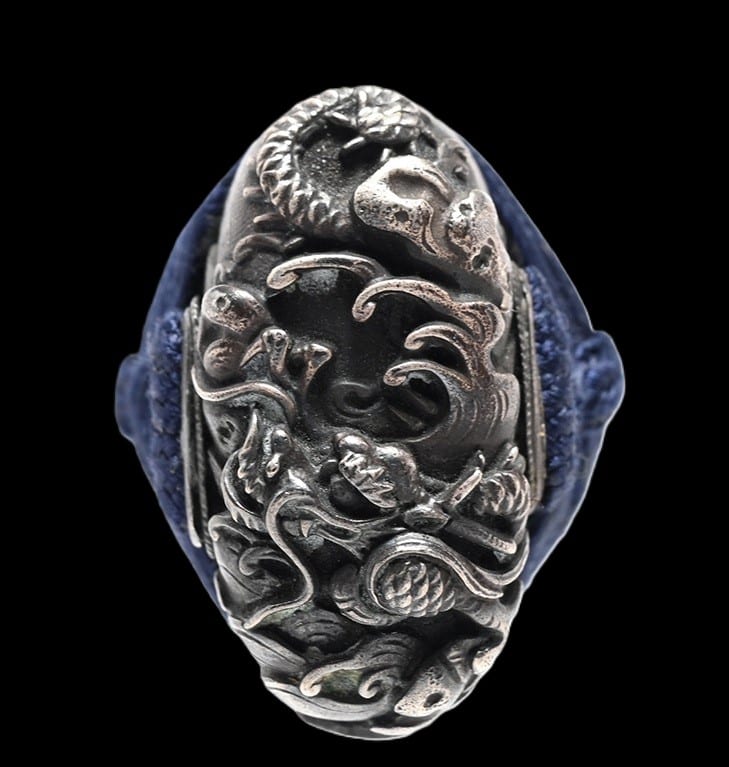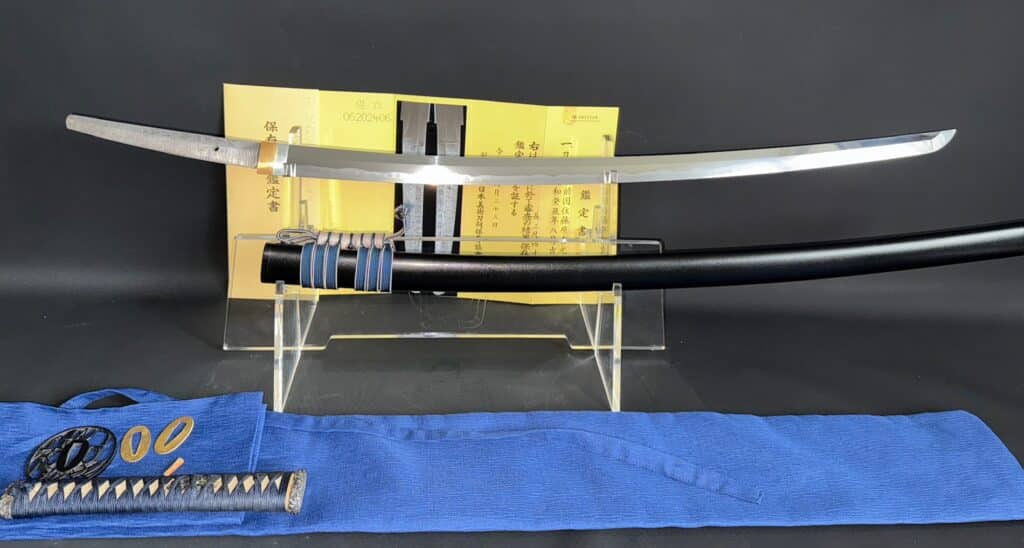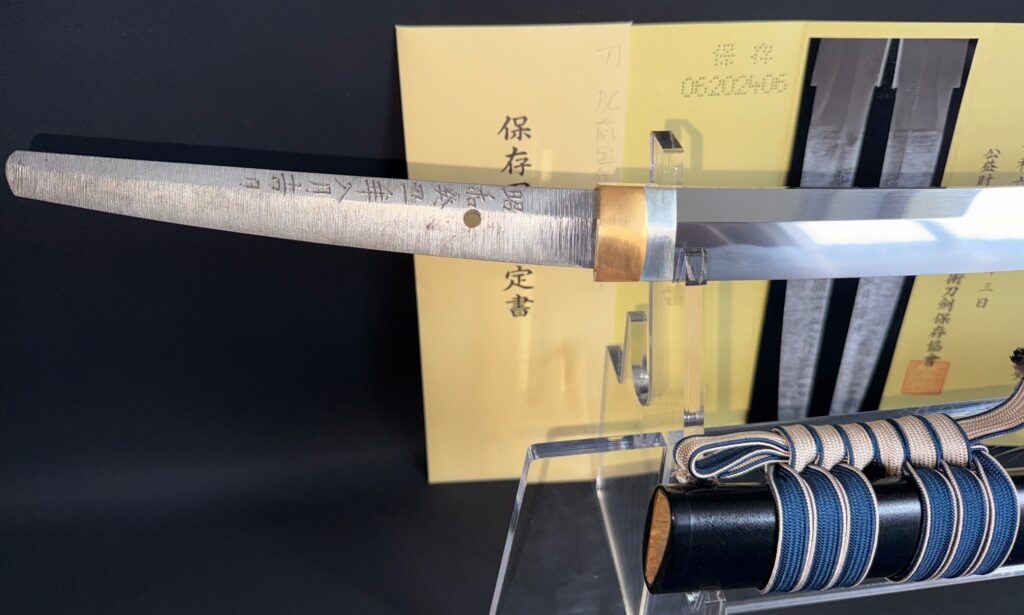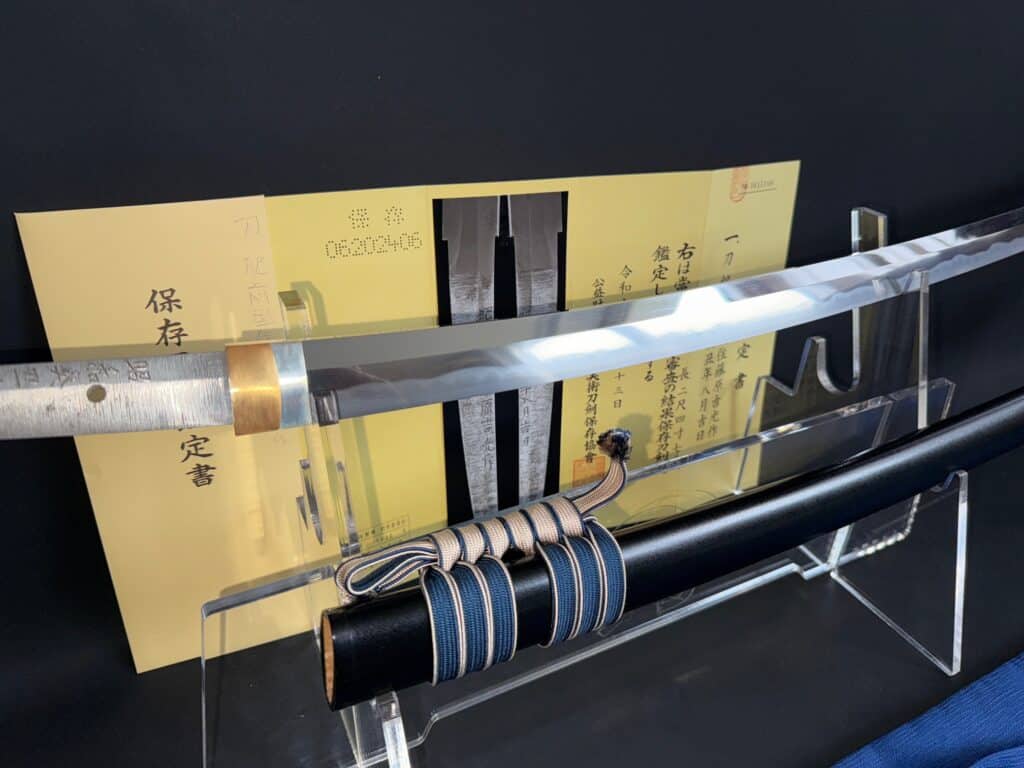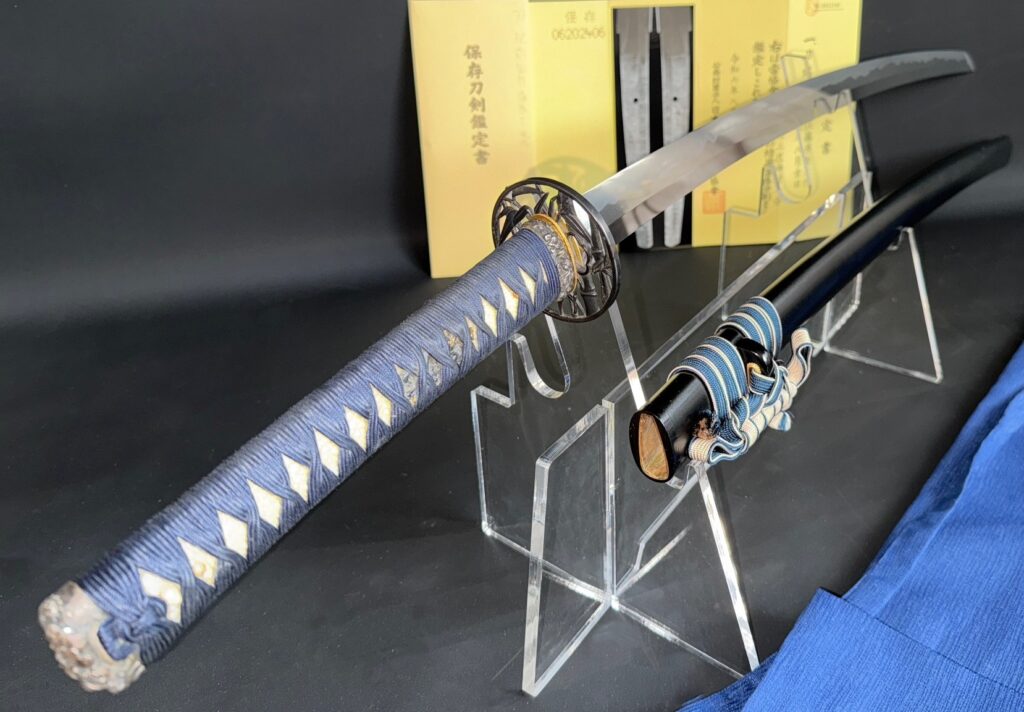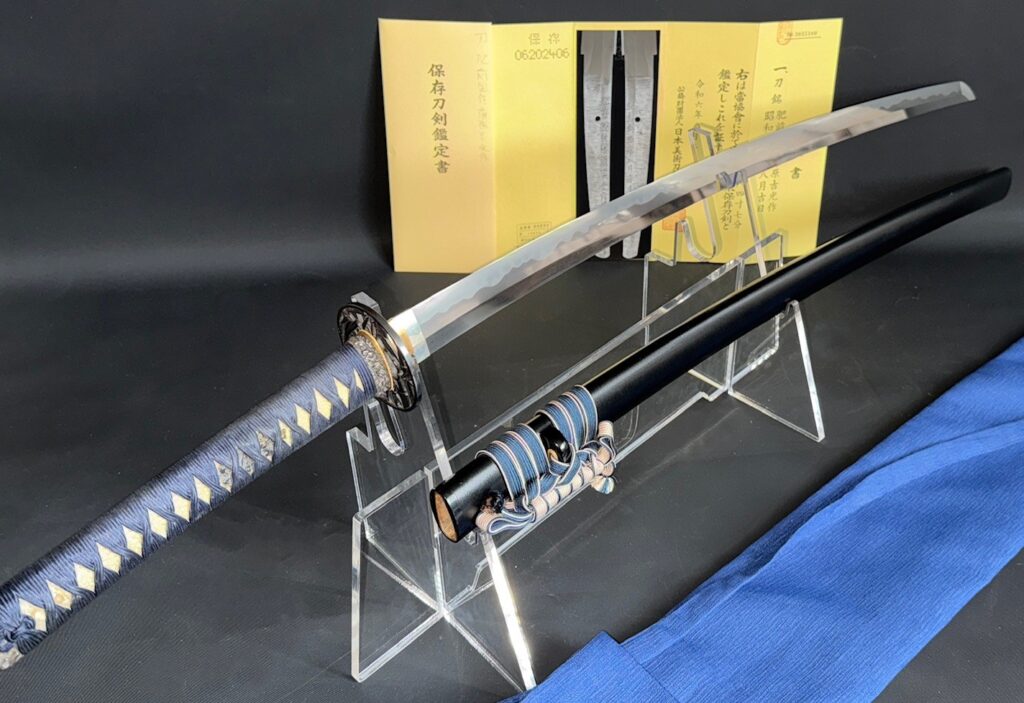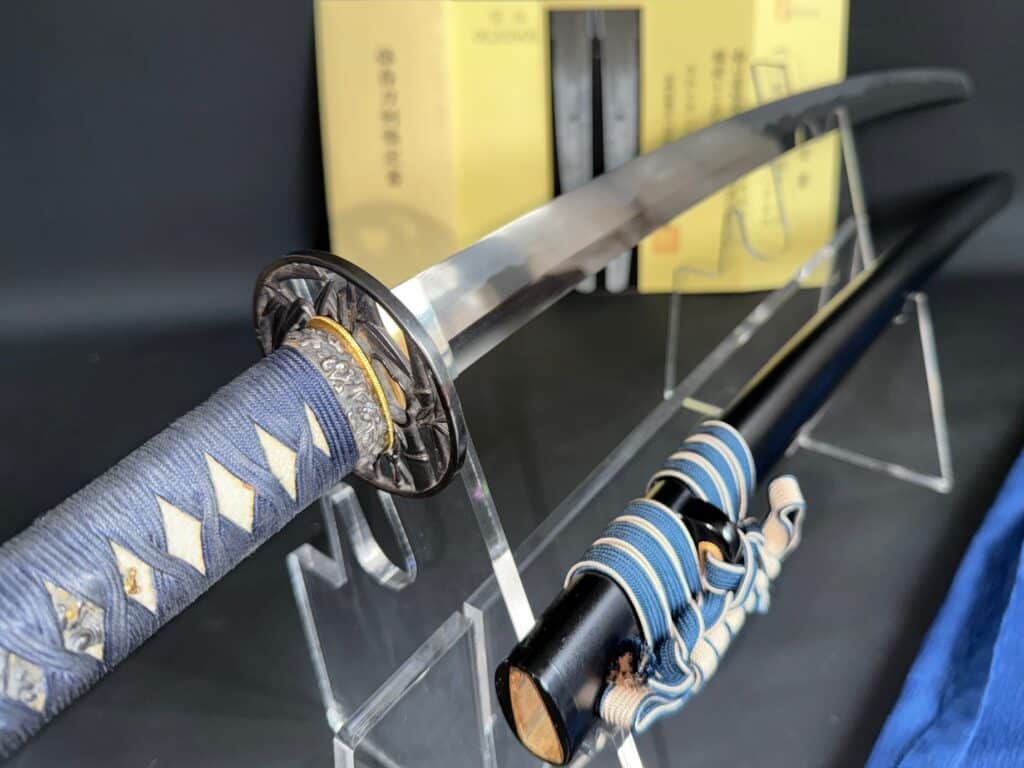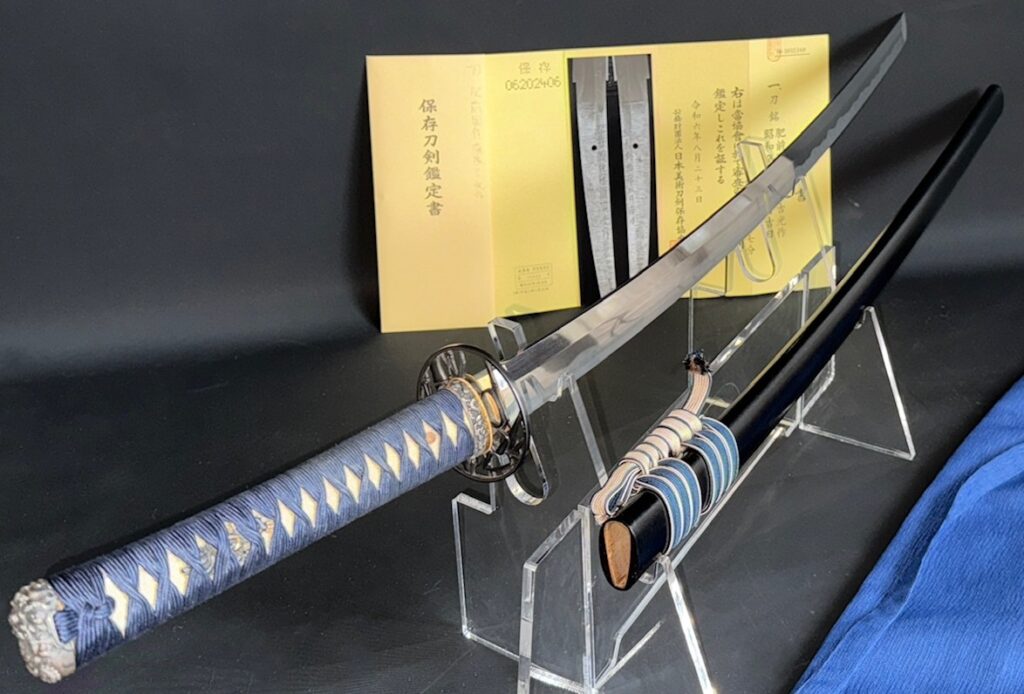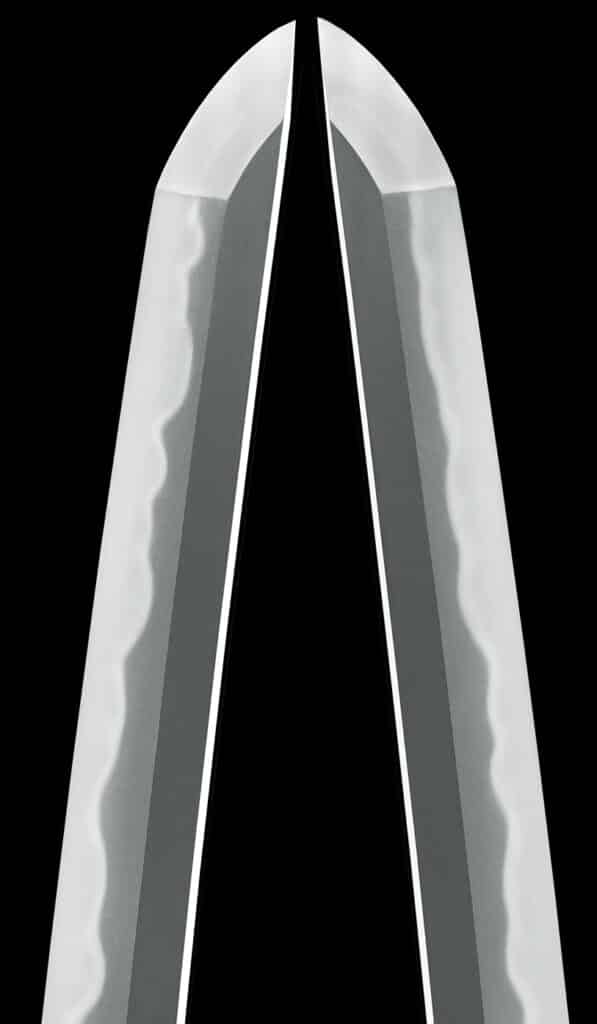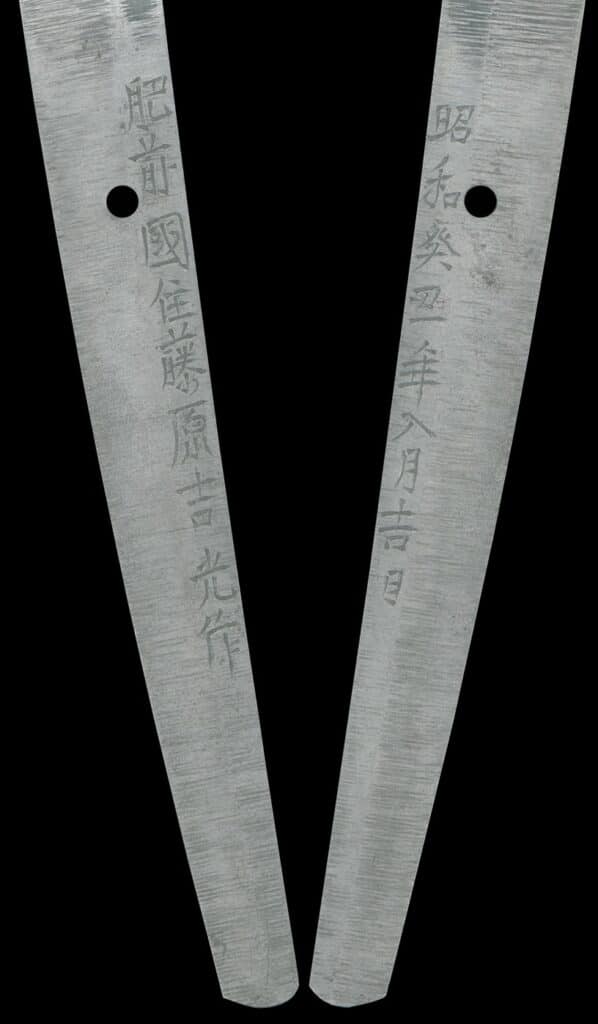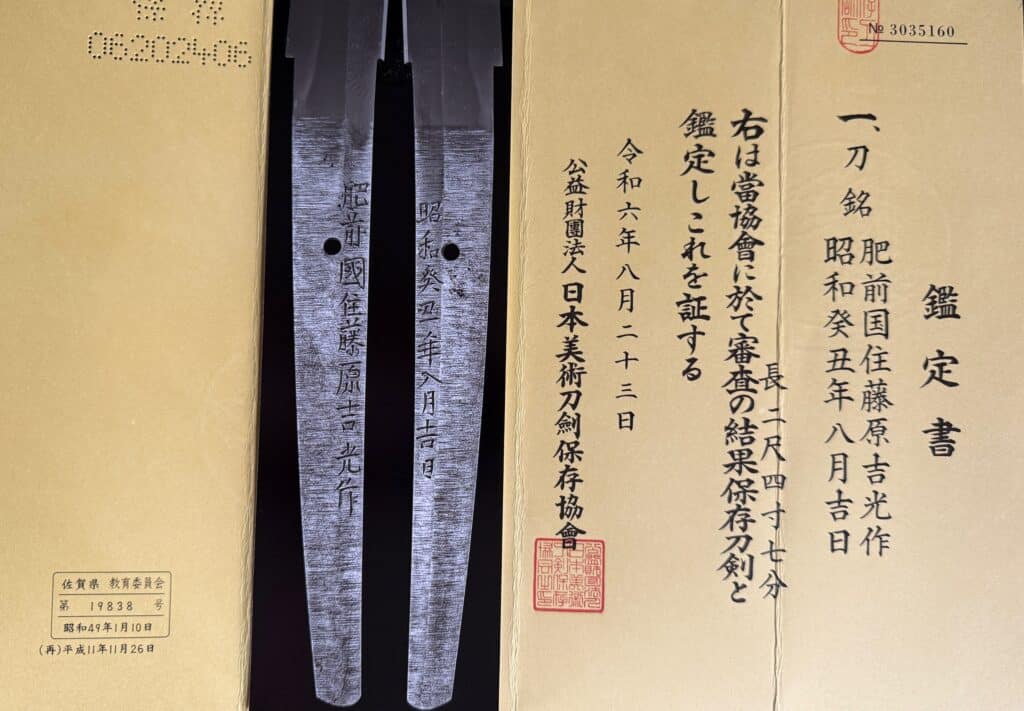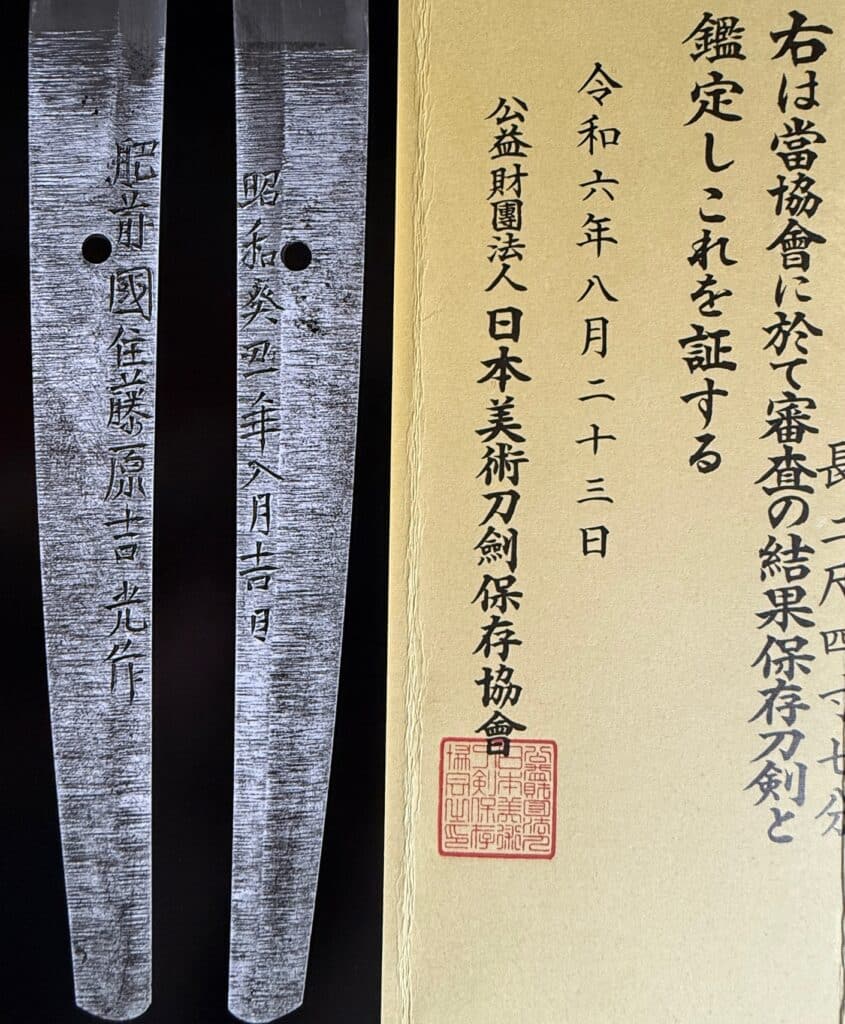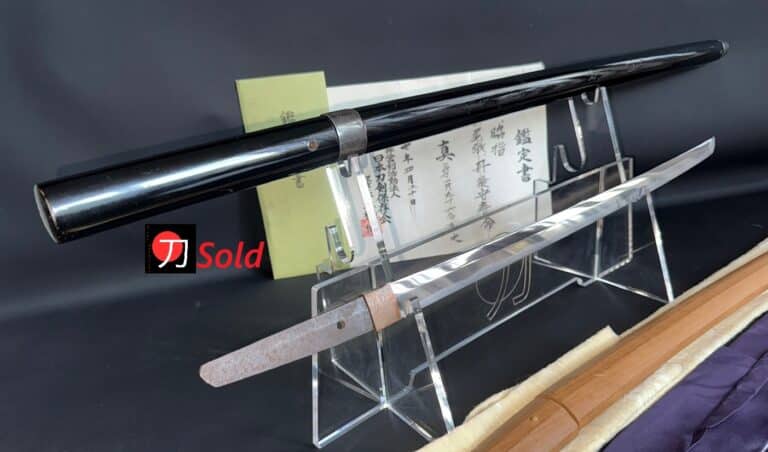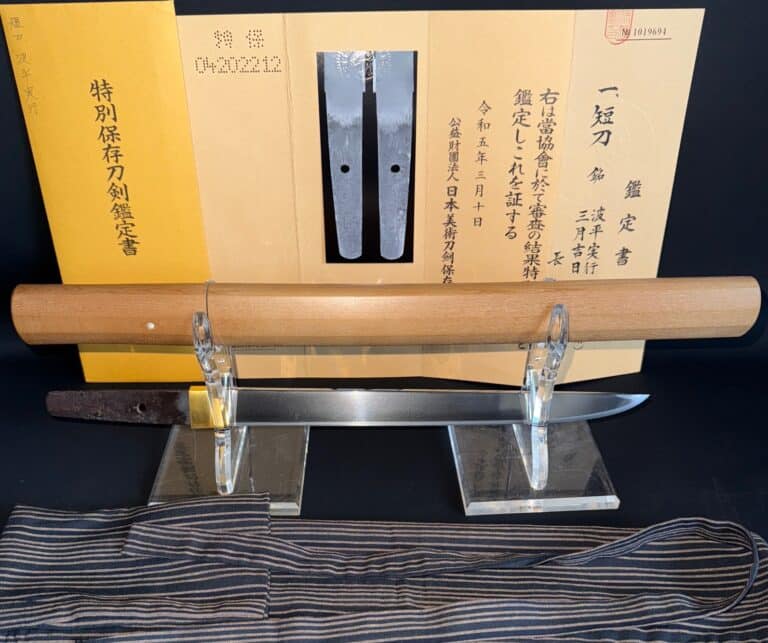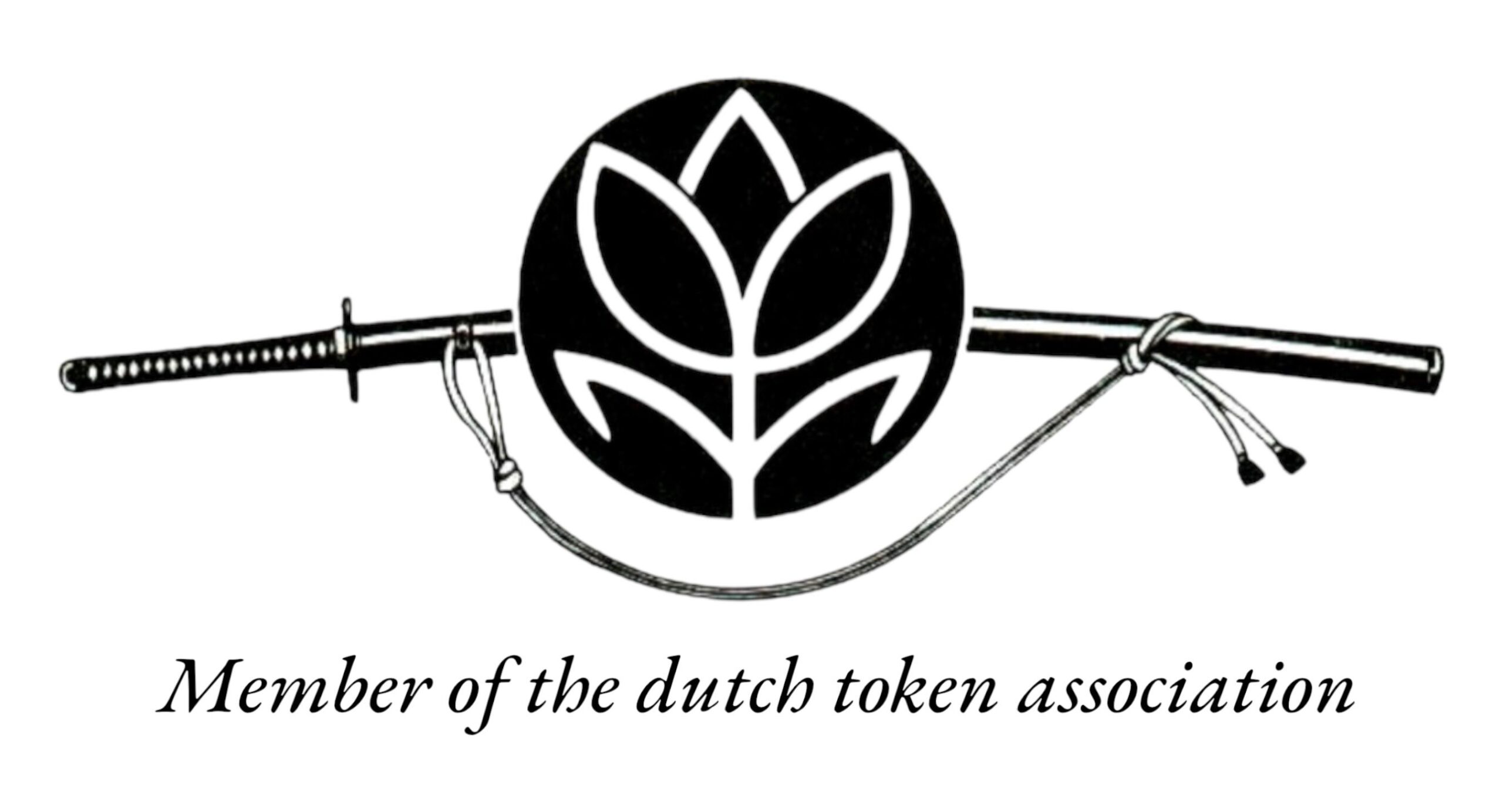Description
The Katana Hizenkoku Yoshimitsu is a remarkable sword crafted by the Japanese swordsmith Fukuda Mitsuo,
who used the name Yoshimitsu as his signature. Below is a detailed breakdown of the sword and its background:
Sword Details:
Name: Katana Hizenkoku Yoshimitsu
Real Name of Swordsmith: Fukuda Mitsuo
Preserved Sword: Yes (NBTHK Hozon)
Blade Length: 74.9 cm
Sori (Curvature): 2.2 cm
Width at the Base: 3.4 cm
Weight at the Base: 7.5 mm
Width at the Tip: 2.35 cm
The weight of the blade is 996 grams.
Mekugi Hole: 1
Era: Showa Era 1974
Country of Origin: Japan, Saga Prefecture
Swordsmith Background:
Full Name: Fukuda Mitsuo (born in 1912)
Pseudonym: Fujiwara Yoshimitsu
Region: Saga Prefecture, Japan
Apprenticeship: Mitsuo became a pupil of the renowned swordsmith Koyama Nobumitsu in 1932.
Career and Contributions: Mitsuo worked as a navy commissioned swordsmith during the Second World War,
forging blades for the Japanese navy at the Sasebo Arsenal, located in Nagasaki Prefecture.
His skills and craftsmanship were highly regarded, and he continued producing swords after the war.
Historical Significance:
Peace Treaty Commemoration: In 1952, when Japan signed the peace treaty with the United States,
Mitsuo forged a memorial sword to commemorate the historic event.
Sword Competitions: Mitsuo was a recognized figure in the swordsmithing community.
He earned several prestigious Nyusen Prizes at the NBTHK (Nihon Bijutsu Token Hozon Kyokai) swordmaking competition,
winning in 1955, 1958, 1968, and 1970.
Mitsuo was known for his dedication to the study of iron materials and the improvement of swordsmithing techniques.
His continued experimentation and refinement in metallurgy helped shape his signature style, which is evident in his swords’ fine balance of form and function.The Katana Hizenkoku Yoshimitsu, forged by Fukuda Mitsuo, represents a blend of tradition and modernity,
reflecting the swordsmith’s skill and significant contributions to Japanese swordmaking in the mid-20th century.
His work is still highly regarded in the world of Japanese swords, and his craftsmanship continues to be celebrated.

